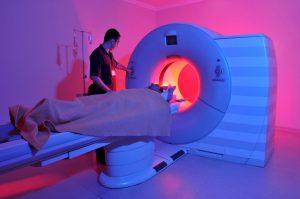In a recent study, researchers have developed a new technique that is safer and non-invasive in order to track within brain and breast tumors in living mice (Figure 1). Tumour-assocated macrophages (TAMs) are recruited to the site of the cancer and reprogrammed for growth and often induce resistance to certain cancer therapies. This study has shed light on how these macrophages function through the duration of tumour progression. This may lead to an improvement in existing and development of new therapeutic interventions. The researchers have shown previously how drugs targeting TAMs can reprogram them to go from a cancer promoting state and turn them into a cancer destroying state.

Figure 1: Magnetic Resonance Imaging (MRI) may be used as a tool for non-invasive imaging of tumours…
The team have also shown how macrophages which reside in the brain, microglia, as well as monocyte-derived macrophages (MDMs) which are derived from circulation, form a varying immune cell population within the gliomas and brain metastases. Currently, only invasive methods exist to track changes in macrophage numbers and distribution longitudinally. This technique to view gliomas is through biopsy, which can also be inefficient in tracking the immune cell landscape.
In this paper, the researchers sought out to map the immune cell landscape , non-invasively, by injecting murine models of gliomas, breats and breast-brain cancers with two specific types of nanoparticles. These particles were labelled with fluorine isotope (19F) which has a signal that can be detected through the use of MRI. Therefore, these signals can be captured and imaged to provide a picture of the immune cell landscape of tumours.
They highlighted and described the distribution of immune cell populations as well as characterised them in different cancer types, in the process developing a new imaging and non-invasive technology. This will provide scientists with the tools to study the immune landscapes of tumours, which may pave the way for therapeutic developments.
Journal article: Croci, D., et al, 2022. Multispectral fluorine-19 MRI enables longitudinal and noninvasive monitoring of tumor-associated macrophages. Science Translational Medicine.
Summary by Stefan Botha










